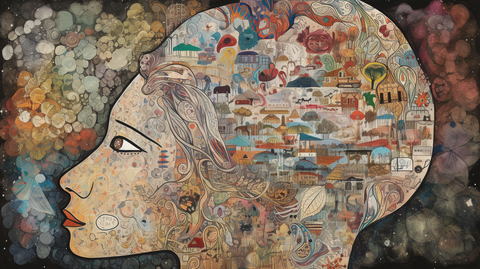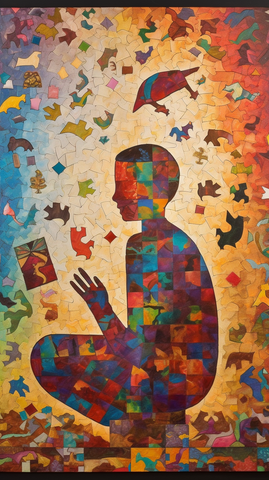Both Sides Now: Joni Mitchell’s Song, Meaning & Autistic ...
Clouds are more than shapes in the sky. They’re feather canyons and ice cream castles, shifting illusions of what lif...

Written by HeyASD.com Team
Autism, also known as Autism Spectrum Disorder (ASD), is a developmental disorder that affects how a person perceives the world and interacts with others. It is a complex condition characterized by a wide range of abilities and challenges. While each individual on the autism spectrum is unique, there are common traits that many people with autism exhibit.

Autistic traits refer to the behavioral patterns and characteristics commonly observed in individuals with autism. These traits can vary significantly from person to person but generally involve difficulties in social communication, repetitive behaviors, and sensory sensitivities.
One of the core autistic traits is difficulty with social interactions. Autistic individuals may struggle with understanding and using verbal and non-verbal cues, such as body language, facial expressions, and tone of voice. They may find it challenging to initiate or maintain conversations, interpret sarcasm or humor, and understand the perspectives of others.
Another common autistic trait is engaging in repetitive behaviors and developing restricted interests. This can manifest as repetitive movements (e.g., hand flapping, rocking), rigid adherence to routines or rituals, and a strong preference for specific topics or activities. These repetitive behaviors and restricted interests often provide comfort and a sense of predictability to individuals with autism.
Many autistic individuals experience sensory sensitivities, meaning they may be more or less sensitive to certain sensory stimuli such as noise, light, touch, taste, or smell. Some may be overwhelmed by loud noises or bright lights, while others may seek sensory stimulation. Sensory sensitivities can significantly impact an individual's daily life and contribute to challenges in various environments.

While autistic traits can differ from person to person, there are several characteristics commonly associated with autism:
Difficulty with Social Interactions: Autistic individuals may struggle with making and maintaining friendships, understanding social norms, and interpreting social cues accurately.
Challenges with Non-Verbal Communication: Many autistic individuals have difficulty understanding and using non-verbal communication, including body language and facial expressions.
Rigidity and Resistance to Change: Individuals with autism often find it challenging to adapt to changes in routines or unexpected events. They may prefer consistency and predictability.
Special Interests and Intense Focus: Autistic individuals may have a deep passion for specific topics and engage in focused, in-depth exploration of those interests.
Sensory Processing Differences: Sensory sensitivities or differences in sensory processing can impact how autistic individuals perceive and respond to their environment.
Executive Functioning Challenges: Many individuals with autism struggle with executive functioning skills, such as planning, organizing, and managing time effectively.
Unfortunately, there are many misconceptions and stereotypes surrounding autism and autistic traits. It is crucial to dispel these myths to foster a better understanding and acceptance of neurodiversity. Autism is not a disease or something to be cured; it is a different way of perceiving the world.

Creating an inclusive and supportive environment for individuals with autistic traits is essential. Here are some strategies for supporting autistic individuals:
Encouraging Social Inclusion: Promote inclusive practices that foster social interaction and acceptance among neurodiverse individuals and their peers.
Promoting Effective Communication: Use clear and concise language, provide visual supports, and encourage alternative communication methods if necessary.
Creating Sensory-Friendly Environments: Minimize sensory overload by providing quiet spaces, considering lighting and sound levels, and accommodating sensory needs.
Understanding common autistic traits is crucial for promoting acceptance and inclusion. Autistic individuals possess unique strengths and perspectives that contribute to our diverse society. By embracing neurodiversity, we can create a world that appreciates and accommodates everyone's differences.
FAQs
1. Can autistic traits change over time? Yes, autistic traits can change and evolve over time as individuals develop coping mechanisms, receive support, and engage in therapies and interventions.
2. Are all autistic individuals the same? No, each autistic individual is unique, and their experiences and strengths can vary significantly. Autism exists on a spectrum, and the traits and challenges can manifest differently in different individuals.
3. How can I support someone with autistic traits? Supporting someone with autistic traits involves creating a supportive and inclusive environment, promoting effective communication, and understanding and accommodating their specific needs.
4. Is autism a disability? Autism is considered a neurodevelopmental disorder rather than a disability. However, many autistic individuals may experience challenges that can impact their daily lives and require support.
5. Can individuals with autistic traits lead fulfilling lives? Absolutely! With the right support, understanding, and opportunities, individuals with autistic traits can lead fulfilling lives and make valuable contributions to society.
Discover the articles that other autistic adults are finding most meaningful right now.

Clouds are more than shapes in the sky. They’re feather canyons and ice cream castles, shifting illusions of what lif...

Be inspired with our positive affirmations for autistic adults to reframe negative self-talk, reduce anxiety, and cul...

Finding clothes that feel good shouldn’t be this hard. At HeyASD, we design sensory-friendly clothing with real autis...

Ariel’s story in The Little Mermaid has long resonated with the autism community. Discover how her traits—like intens...

Work should fit your brain, not the other way around. Explore 25+ side hustles and small business ideas for autistic ...

Autism hats are more than fashion. This in-depth guide explores their history, types, and benefits — from sensory com...

About the HeyASD.com Team
Autistic‑owned • Values‑led • Sensory‑friendly design
We are autistic creators, writers, and advocates dedicated to producing resources that are practical, sensory-aware, and grounded in lived experience. Our mission is to make information and products that support the autistic community accessible to everyone, without jargon or condescension. Learn more about our team.
This article is written from lived autistic experience and an evidence-aware perspective. It is for general informational purposes only and should not be taken as medical, legal or therapeutic advice.
Always consult a qualified clinician or occupational therapist for individual needs and circumstances.

HeyASD is more than a store, it’s a calm, supportive space for autistic adults and the people who care about them. Explore identity-affirming stories, sensory regulation tools, and uplifting resources from our community.
Thank you for reading. We hope these resources bring comfort and clarity.